




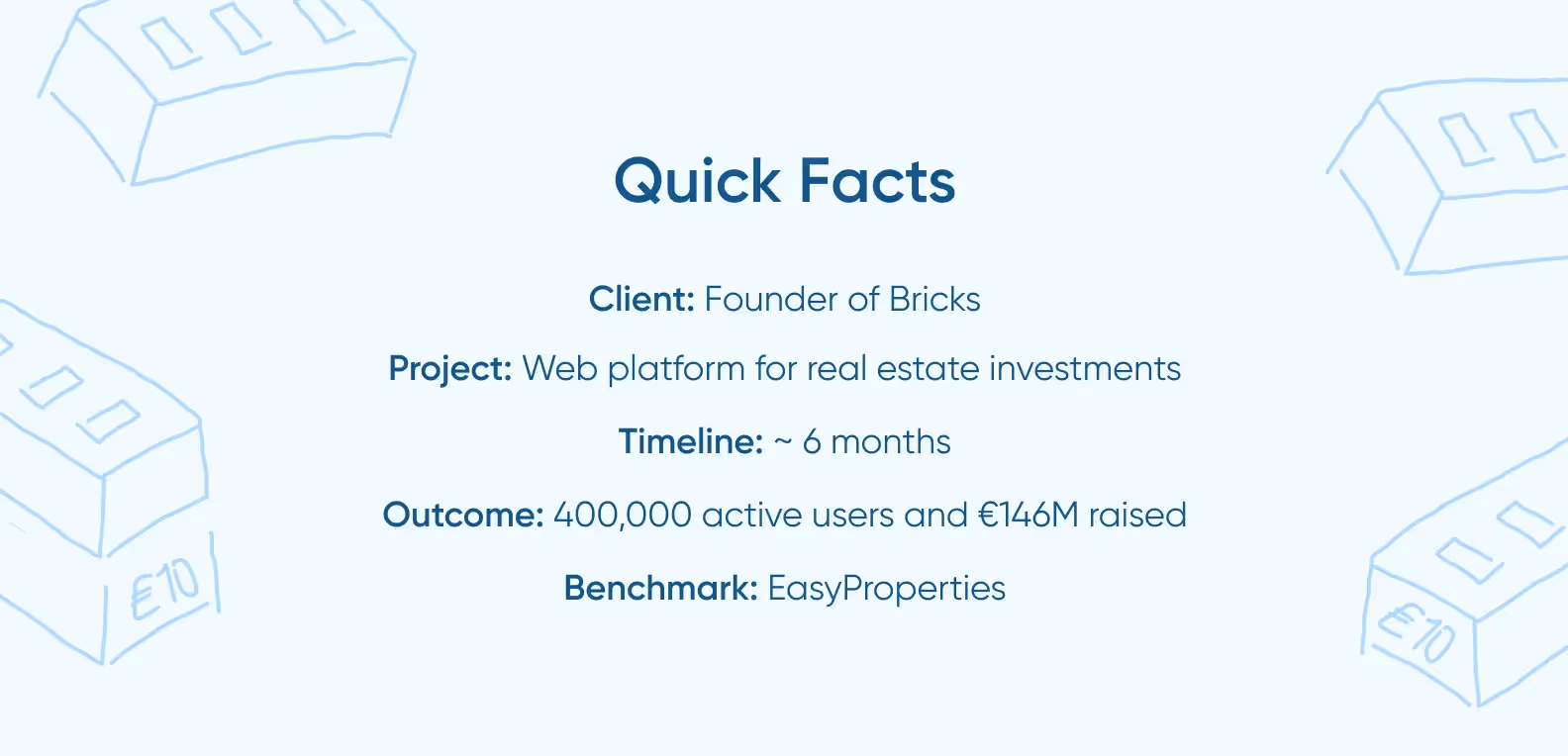
We love watching our former projects grow. When a product we helped build makes it big — raising funding, gaining traction, or topping charts — it feels like a shared win.
Bricks is a perfect example. It’s a real estate investment platform built for the French market. Today, it has over 400,000 active users, and since launch, the platform has raised €146 million. It’s been featured in Forbes, Le Parisien, and other major outlets.
Here’s how it all started.
Back in 2020, we were approached by Cédric — a serial founder from France — with an idea for a new investment product. The model? A twist on traditional real estate investing.
Real estate usually requires large capital, putting it out of reach for many people. But what if anyone could invest starting from just €10 and earn passive income?
That’s the concept behind Bricks. On the platform, users can buy a "brick" — a fractional share of a property. When that property is rented out, investors receive a portion of the rental income based on how many bricks they own.
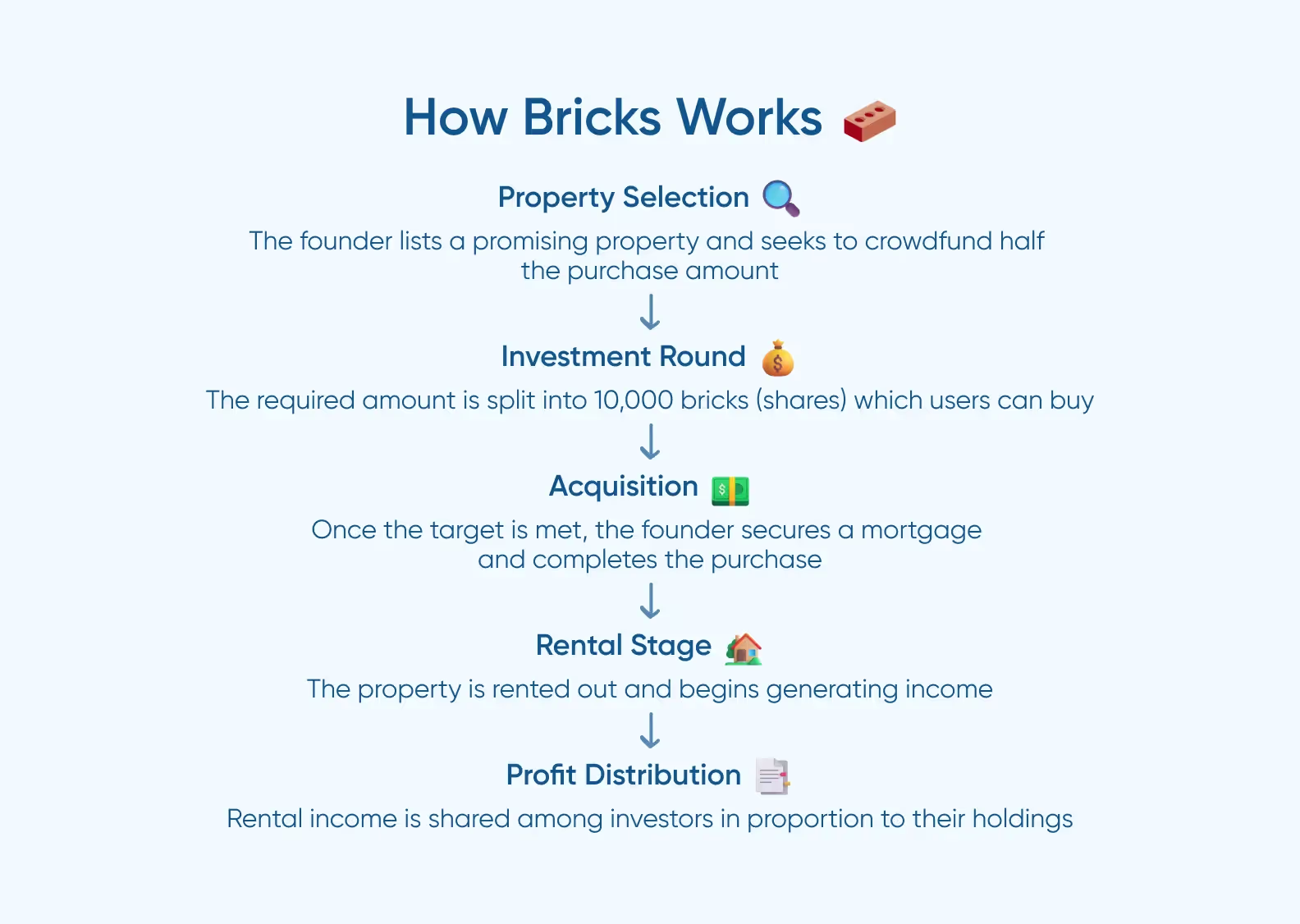
Key Features for Users
Bricks earns revenue via a percentage fee included in each transaction. The platform’s commission is factored into the property’s value, so users don’t need to pay for a separate subscription.
The idea wasn’t entirely new — but the market was. One of the client’s benchmarks was EasyProperties, a global platform for shared real estate ownership. But in France, there was no comparable solution at the time — so Bricks had the first-mover advantage.
Reusing proven ideas and adapting them to new markets is common for startups. We've seen it before — like when one of our clients replicated a major e-signature product with a key twist: a dramatically lower subscription price.
The client came to us with a clear task: to develop a web application. Normally, we also handle the design for new products — but in this case, the client already had one. However, once we dove into the project, it became clear that some design tweaks on our side were inevitable 🙂
But let’s take it step by step.
<div class="post_divider"></div>
Looking back: how we’ve transformed our presale process in 4 years 💪
During the presale stage, we dive deep into the client’s business goals to define a clear feature list and estimate the development time and cost. This matters for both sides: the client understands what they’re paying for and what the budget looks like, while we get to plan resources efficiently and set clear development tasks.
So, how do we work now?
Today, presale is a full-fledged discovery phase. We bring in a business analyst to map out product logic, build user personas, research the market, and run product–market fit analysis — especially when the client only has a rough idea of the product.
This helps us prioritize features not just because a client asked for them, but because they truly solve user problems and give the product a competitive edge.
%20Commercial%20offer%20for%20Events%20app%20_%20Purrweb.avif)
What was it like before?
When we worked on Bricks, our approach was much more basic. We simply studied similar products with the client and copied over key features — without deeply analyzing whether they were actually needed. If Bricks came to us today, we’d definitely kick things off with proper discovery and build out the full context 🙂
<div class="post_divider"></div>
Usually, we handle both design and development. In this case, we worked with the client’s designs — but they needed more polish than expected.
Once we opened Figma, we noticed key screens were missing — like system error messages, payment confirmations, or offline states. These "technical" screens are essential for good UX.
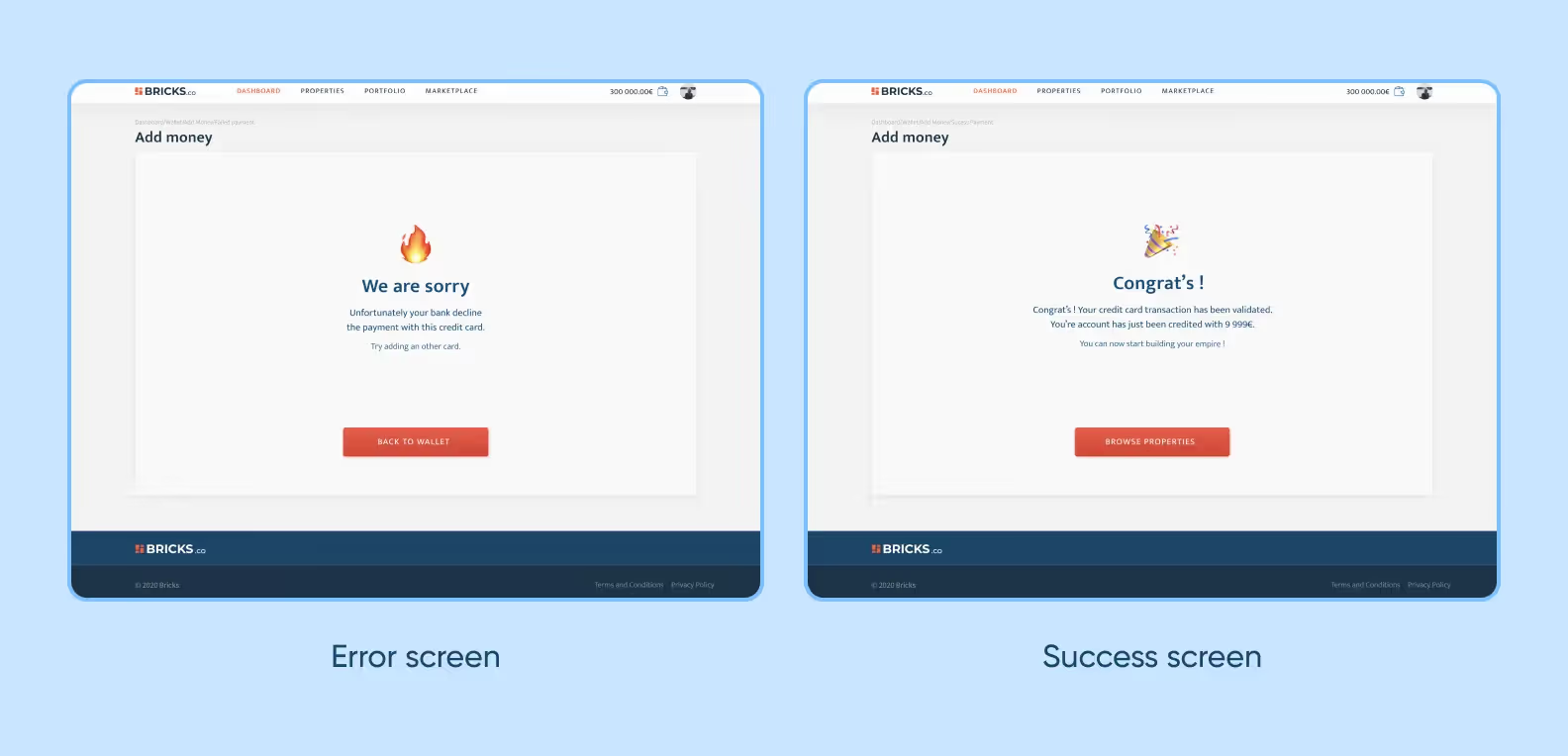
There were also issues with:
For example, the dashboard showed the total property value and the target investment amount — but it was unclear where these numbers came from 🙄 In design mockups, it’s easy to drop in placeholder values, but developers need to know how those values are actually calculated. We can’t just draw random numbers.
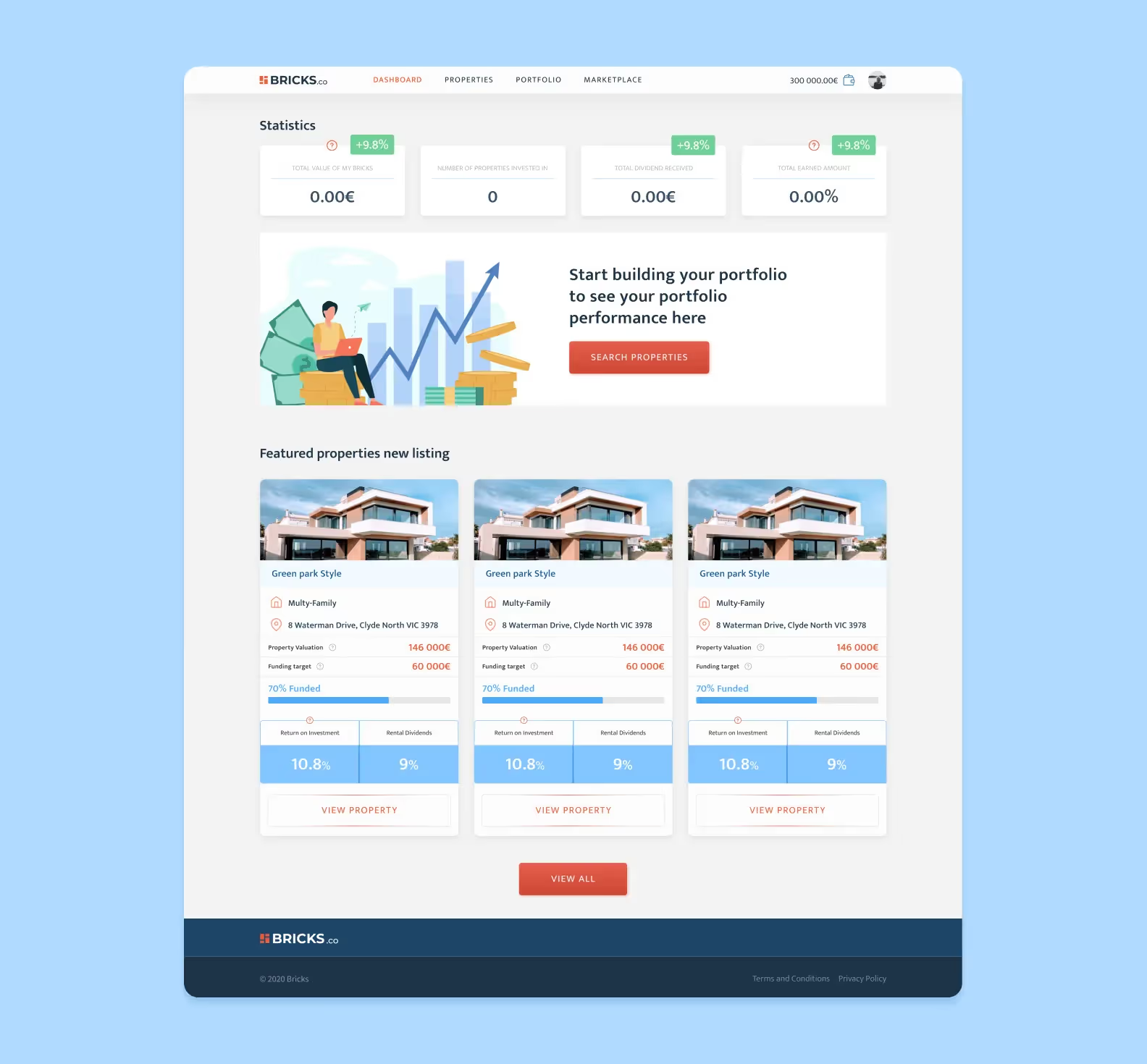
The issue was that parts of the design had been cobbled together from screenshots of other apps — without any underlying logic for the calculations. So we worked out the formulas ourselves — because users need to see real, meaningful numbers, not placeholders.
We also had to clean up the rest of the mockups to avoid issues during development. We brought in one of our UI/UX designers and quickly filled in the missing pieces 💪
.avif)
We put together a full UI kit — standardizing colors, button states, input fields, and other key components.
Incidentally, we’d encountered similar issues on another project before. That time, we were building an app for e-cigarette sellers — SOAK (disclaimer: we don’t endorse smoking!) — based on the client’s existing designs.
The challenges were almost identical. After that project, we wrote a blog post with a checklist for making designs more developer-friendly, along with real examples from the project.
One of the biggest challenges for us was payment processing. Originally, we planned to use Stripe — a reliable global solution. But during deployment, we discovered Stripe doesn’t support investment platforms. So we quickly pivoted to Lemonway, a French payment service.
We coordinated directly with Lemonway to resolve integration challenges. Another important aspect was compliance with European regulations. Under these rules, a user’s card can only be saved for recurring payments with a fixed amount.
That’s why the payment process works like this:
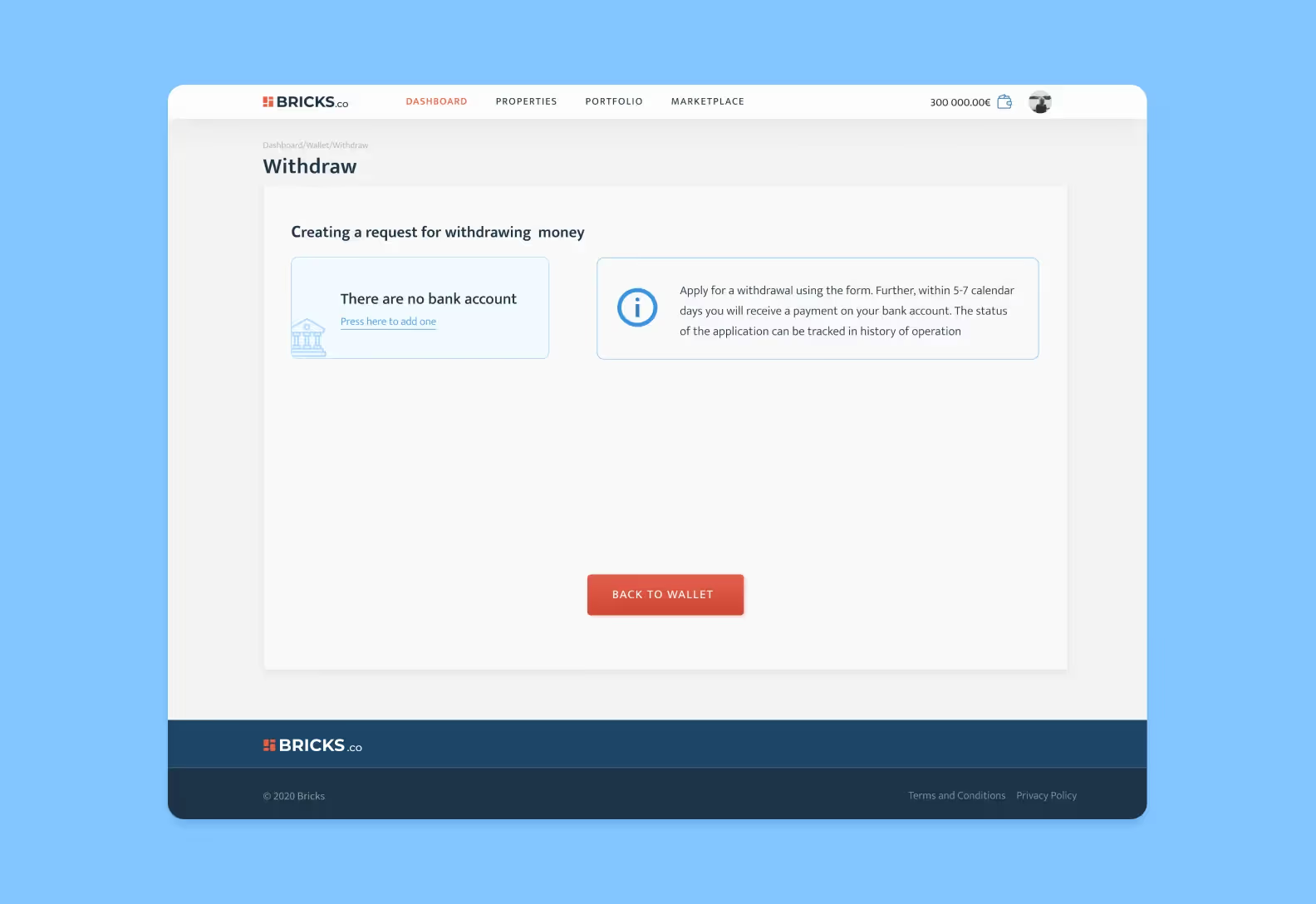
Another key goal was multilingual support to scale beyond France. We created a flexible localization system where:
We delivered the finished platform to the client and moved on to help other startups and businesses launch their digital products. Since then, Bricks has grown into a successful investment service, attracting hundreds of thousands of users and tens of millions of euros.
And it’s nice to know that the very first “brick” of that success was laid by the Purrweb team 🙂
Here are a few more client success stories: The fintech startup Kem raised $1M with the MVP we built, and the EnerGO app for renting power banks is now operating across Russia.
And it all started with us!
➡️ We help startups launch products fast. We build MVPs focused on real user needs, with clean design and scalable infrastructure. We’ll dive into your business context, choose the right tech stack, and help shape your feature set. If needed, we’ll start with product discovery — to understand exactly how your product will solve users’ problems and give it a stronger chance of success.
Got an idea? Let’s talk.
We’ll estimate the timeline and budget, and map out a clear project roadmap.
Why Purrweb?
→ <a class="blog-modal_opener">Let’s estimate your project</a> — for free.